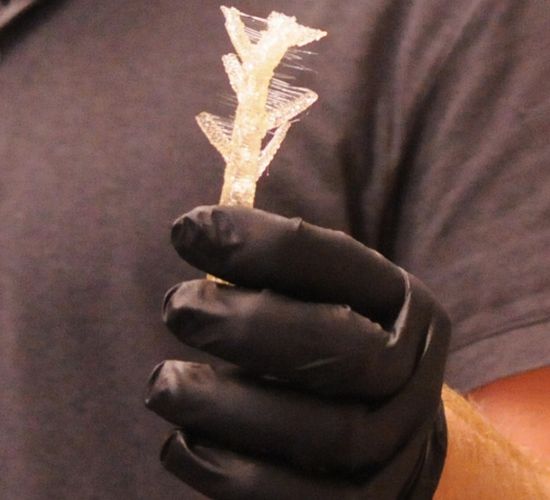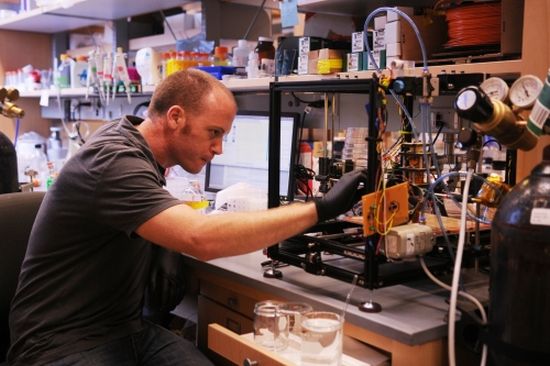Considering the fact that millions of patients worldwide are waiting for organ donors so they could transplant their disfigured organs and spend a normal life, need for some cheap and effective organs has been felt more than ever before. Offering a ray of hope, Penn bio-engineers drawing inspiration from the “lost-wax casting” method, used to create bronze sculptures, have come up with an innovative blood vessel network that makes use of open-source 3-D printers to develop or sustain human organs.
Created in collaboration with the Massachusetts Institute of Technology, the 3-D blood vessel networks have been developed through a complicated process, wherein the research team produces a model of the vessel with a computer and prints a mold of the model with molten sugar, using an open-source 3-D printer. As soon as the sugar hardens, the organ tissue cells, which have earlier been created in the lab and stored in a gel, are then poured into the solidified mold.
Now, the researchers dissolve the sugar to complete the process, once the gel takes a solidified form, to form a complete organ tissue that is not only durable but also expensive. Moreover, it can be transported to different labs worldwide without wasting any time.
Via: TheDP




